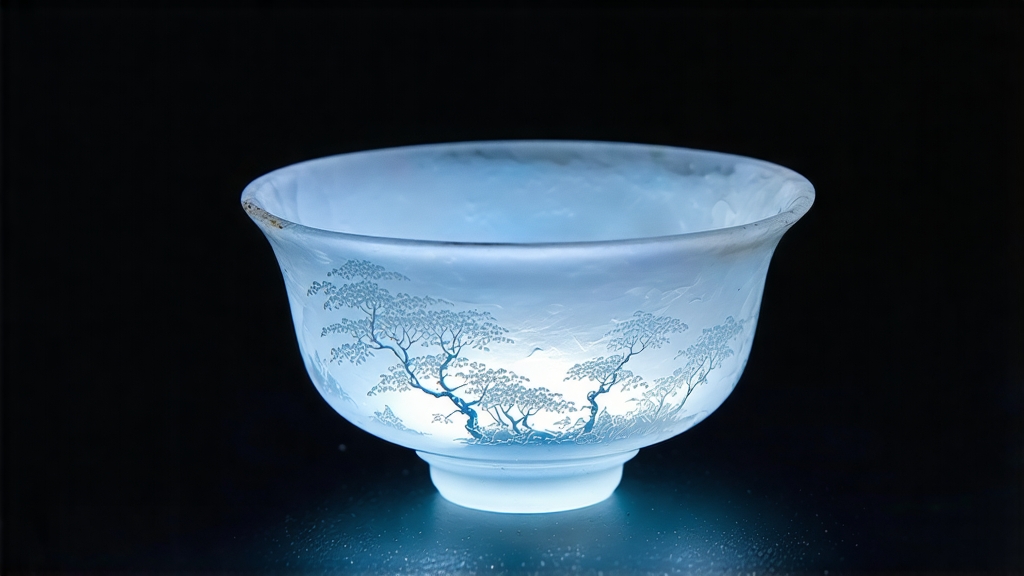
Tucked high on the forested ridges of Yunnan’s Lincang and Simao prefectures, a tea that the locals call “Yue Guang Bai”—literally “Moonlight White”—is harvested in hush and handled almost entirely after sunset. To the international eye it looks like a white tea, yet its leaves are two-toned: one side silvery down, the other a deep purplish black, as if brushed by the moon itself. In China it is classified under the white tea category, but its story, craft and flavour orbit in a universe of its own.
Historical haze
Written records mentioning Yue Guang Bai are scarce; most references appear only after 2003, when small Pu-erh workshops began experimenting with white-style processing on the region’s large-leaf Assamica cultivars. Folklore, however, places the tea’s birth in the late 1990s, when a tea master tried to mimic Fujian’s silver-needle technique but lacked the charcoal-heated windless rooms of the coast. He spread the leaves on bamboo trays and let the cool, arid plateau air finish the job. The result was paler than Pu-erh, darker than Bai Hao Yin Zhen, and carried a nectarous aroma that villagers associated with night-blooming jasmine. Because the withering happened while the mountain moon was visible—an auspicious symbol in Dai and Hani minority cultures—the name “Moonlight White” stuck. Today it is still produced in micro-batches, often by families who also grow Pu-erh, making Yue Guang Bai a quiet sibling rather than a commercial rival.
Leaves of two faces
Yunnan’s indigenous Dayezhong (large-leaf) tea trees, some 70–200 years old, provide the raw material. The bud-and-one-leaf pluck is taken from mid-March to early April, when overnight temperatures drop below 14 °C, slowing enzymatic activity and preserving higher levels of amino acids. The signature colour split is not dyed or fermented; it is the outcome of a 48-hour “moonlight withering” in which trays are set on open-air verandas from dusk till dawn, shielded from sunrise by reed screens. The leaf underside, rich in pubescence, reflects moonlight and remains silvery, while the sun-exposed top surface, protected only by starlight, oxidises just enough to turn sepia then mahogany. This partial oxidation—around 10 %, higher than Fujian white teas but lower than black—creates the tea’s hybrid character: white tea’s freshness riding a black tea’s malt.
Crafting under constellations
Step 1: Picking begins after 19:00 when dew forms, ensuring turgid leaves that resist mechanical bruising.
Step 2: Wind-sorting removes any insect-bitten blades; the Dai people believe the moon repels pests, so only intact leaves are worthy.
Step 3: Moonlight withering lasts two full nights. Humidity is 45–55 %; if clouds obscure the moon, trays are carried indoors and the batch is downgraded.
Step 4: A short 70 °C “sun-bake” of five minutes next morning halts oxidation at the desired point; this flash heat is the only time the leaves meet direct sunlight.
Step 5: Low-temperature desiccation at 42 °C for three hours reduces moisture to 8 %, curling the leaves into claw-like hooks.
Step 6: Seven days of “moon resting” in cloth-lined bamboo baskets allows residual moisture to migrate outward, rounding the aroma.
Some makers then compress the finished maocha into 100 g mini cakes using Pu-erh stone molds, creating a white tea that ages like sheng Pu-erh, gaining honeyed depth over decades.
Chemical poetry
Laboratory tests reveal a rare profile: 4.2 % theanine (calming sweetness), 12 % oxidised catechins (velvet body), and a surprising 0.9 % gamma-aminobutyric acid (GABA), formed during the cool night withering. The combination delivers a liquor that first coats the tongue with white peach, then reveals black-tea cocoa, and finishes with white-tea cucumber crispness. Unlike Fujian whites, Yue Guang Bai contains no detectable geraniol, so jasmine notes are actually an olfactory illusion created by l